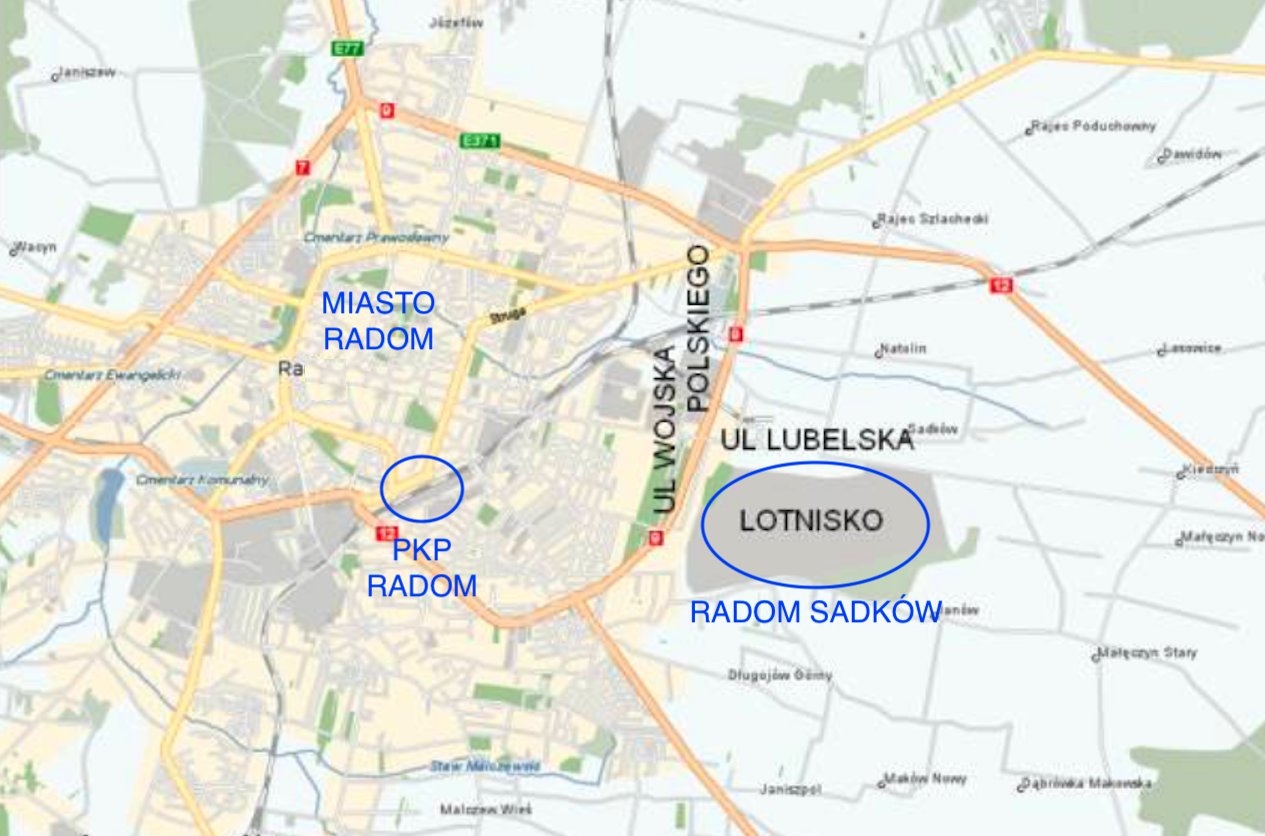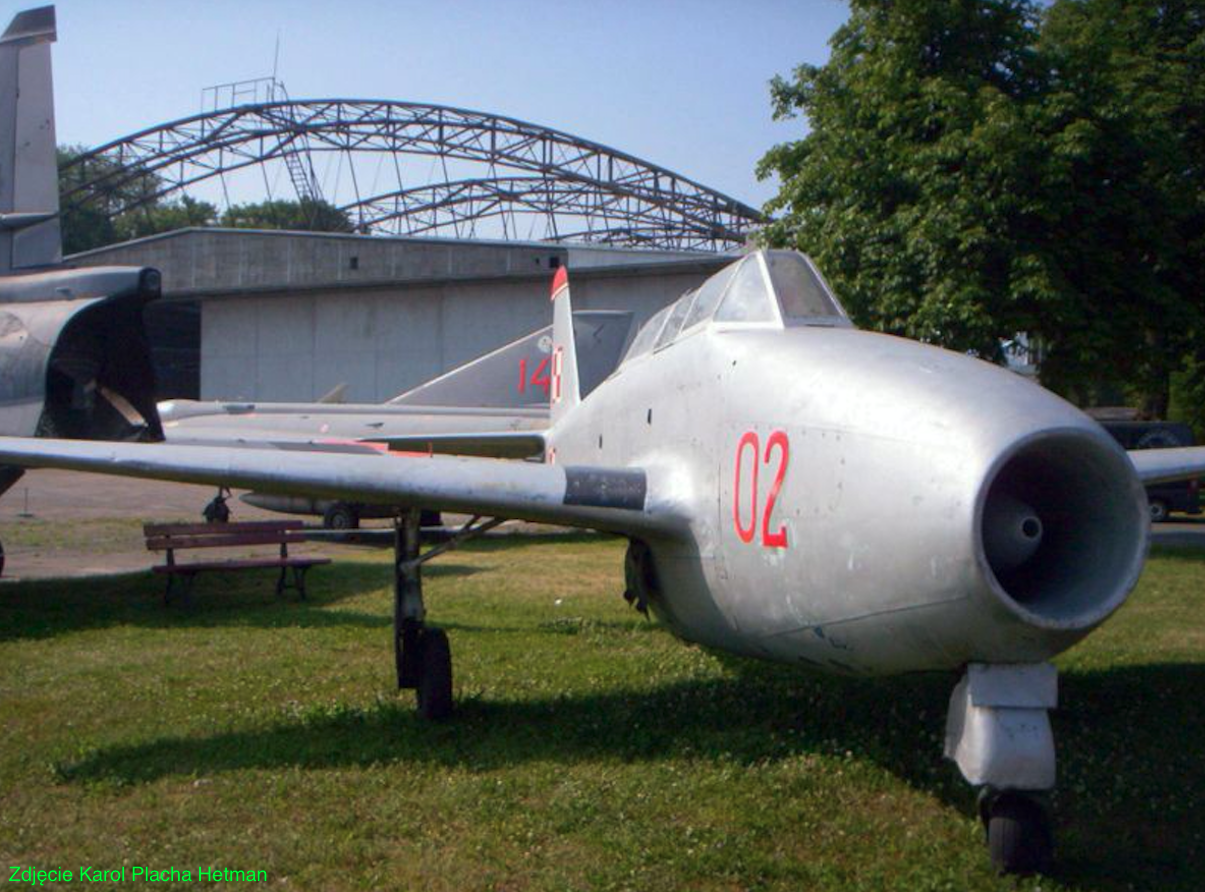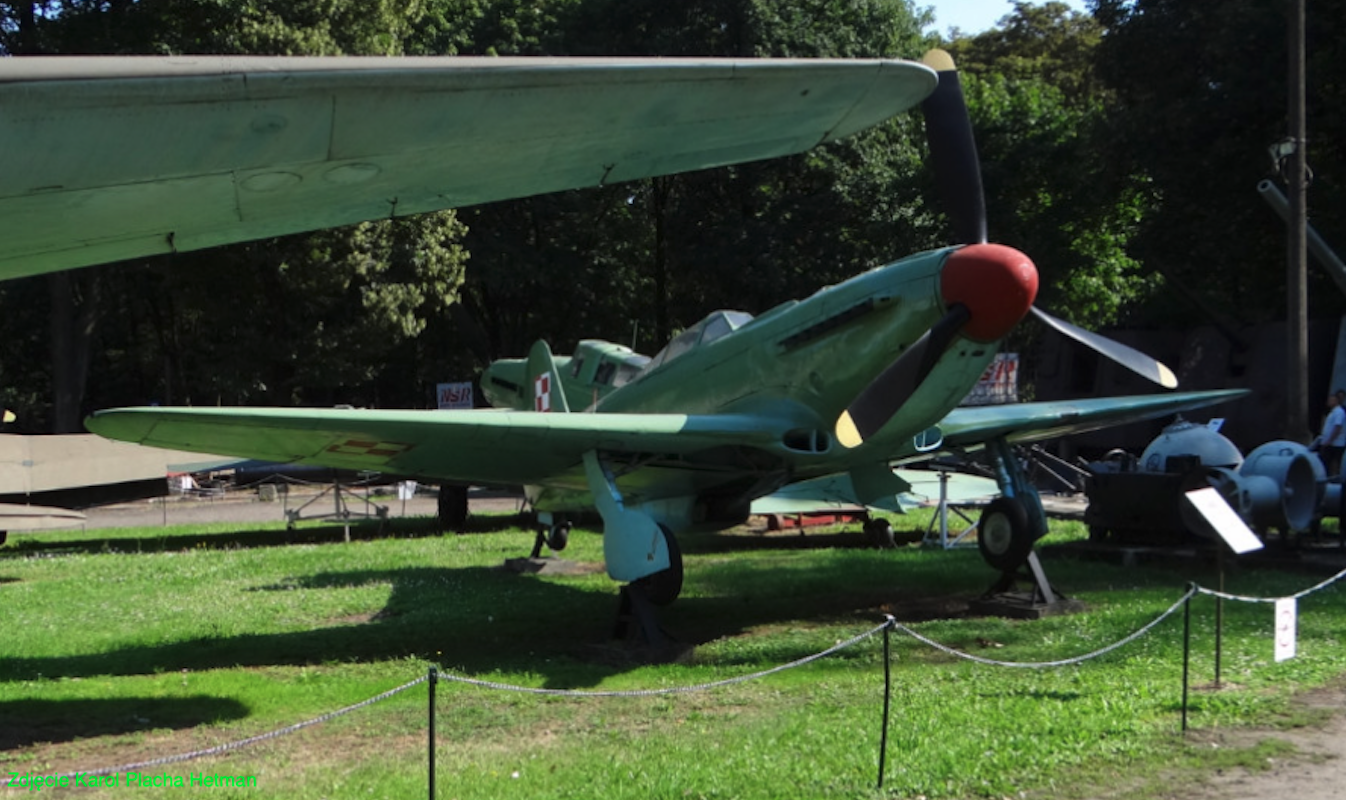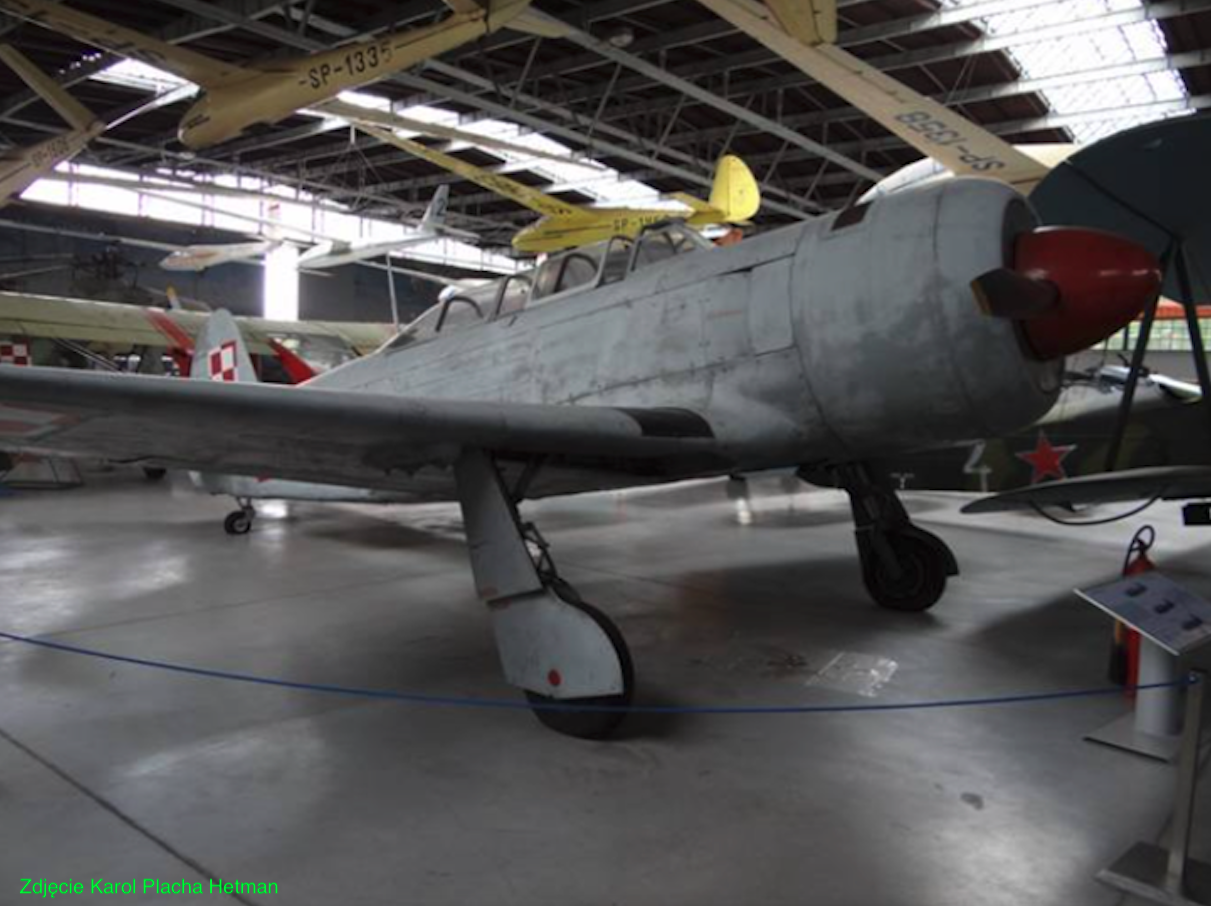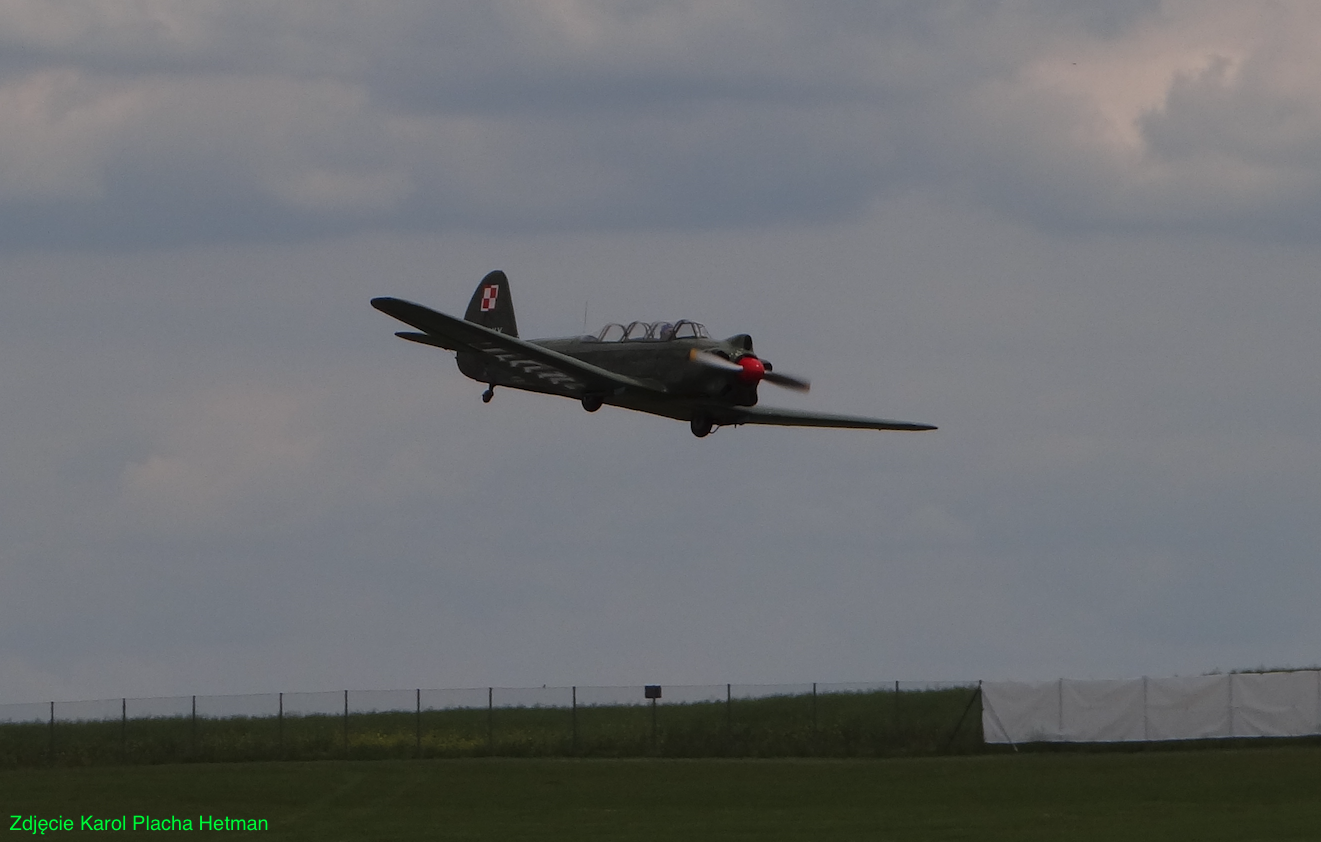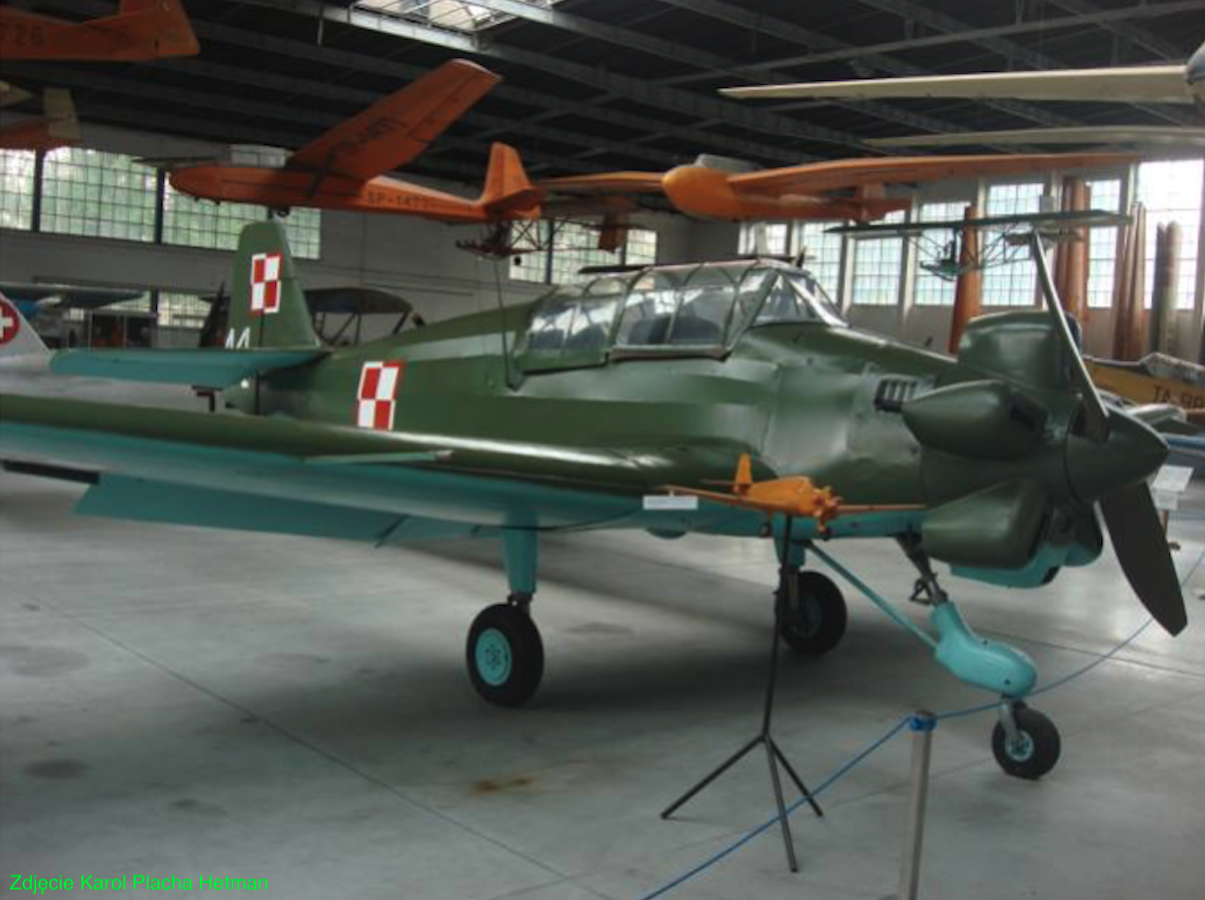Radom 2011-05-23
Radom Sadkow airport.
Geographic coordinates: 51.388N 21.212E.
History of Radom Sadków Airport. 1927-1944.
Radom-Sadków airport is one of many typically Polish airports that do not have their roots in the aviation of the partitioning countries. The airport was and still is associated with the Polish Military Aviation.
In July 1920, the 15th Fighter Squadron, which re-established combat readiness in Lwów and was re-armed with fighter planes, was to be transferred to Radom according to plans. The goal was to support the 4th Polish Army in the Battle of Warsaw. However, the squadron remained in Lwów, in III. Squadron supporting the 6th Polish Army. Therefore, Radom had to wait for military planes.
The beginnings of the airport in Radom date back to 1927. At that time, the Government of the Republic of Poland, after a thorough analysis at the Ministry of Military Affairs, decided to build one of the new airports near Radom. This was due to defense, communication and climatic reasons. 100 hectares of land in the village of Sadków were purchased, which were partly forested. The construction of airport facilities has started.
After only a few months, in 1928, the training of the first pilots in the Training Squadron of Pilots began. In 1935, the Reserve Pilot School was organized by reforming the Pilot Training Squadron. In 1937, the Air Force Reserve Officer Cadet School was established.
In 1939, the airport in Sadków already had an area similar to a rectangle, measuring approximately 1,500 m x 1,000 m and over 150 hectares. The runway had dimensions of 1,500 m x 50 m and was unpaved. Until September 1939, new pilots were intensively trained, when the brutal aggression of the German army led to the outbreak of World War II. After losing the defensive war, the German army occupied the airport and established an airport headquarters here. Smaller nearby airports were also subordinated to this command; Radom – Kozłów (N51 27 40 E21 14 40), Radom – Mazowszany (N51 20 00 E21 08 20), Radom – Piastów (N51 28 50 E21 06 40, area 1,200 m x 1,000 m). Of course, Germanic names were introduced.
Throughout the period of the German occupation, there was a large rotation of units and a lot of air traffic at the airport. All activities were related to the war against the Muscovites and the liquidation of the Warsaw Uprising. All types of German planes passed through the airport. Hunting, assault and bomber regiments were stationed here. Night fighters and reconnaissance aircraft were based here. In June 1944, the German army formed an armored and parachute division at the airport, which took part in the suppression of the Warsaw Uprising.
In 1944, the airport was mined by the German army. These charges were detonated on the night of January 15/16, 1945, destroying the landing field and some buildings. Fortunately, most of the infrastructure has been preserved. The Radom-Piastów Airport was almost completely destroyed. There was not a stone left upon a stone.
History of Radom Sadków Airport. 1944-1958.
At the end of 1944, in Zamość, the communists organized the United Aviation School of the Polish Army. Because the Mokre Airport located near Zamość had poor infrastructure, and in addition there was a strong national underground in the Zamość region, it was decided to transfer the 15th Reserve Air Regiment to Dęblin. Dęblin as a fortress was significantly damaged, so most of the planes were directed to Radom Airport. Thus, from March 1945, the 15th Reserve Air Regiment was based at the Radom-Sadków Airport.
In the first years of Soviet domination, the airport was hardly used. Social and living conditions were not good. There were plans to transform the area of the airport into a state farm, but fortunately they were not implemented, because the communist authorities were still busy fighting the national underground.
1950.
At the beginning of 1950, Poland purchased the first batch of Yakovlev Yak-17 turbojet fighters. Three planes were purchased. The planes were brand new. These machines were delivered in one rail transport to Radom and placed in one of the heavily guarded hangars. Each of the planes was partially disassembled and placed in crates. Their assembly and handover flights were to be carried out by Soviet technicians and pilots. The first Polish Jak-17 aircraft was assembled in July 1950, and flown to Warsaw (Bemowo Airport). Lieutenant Colonel Wasyl Gaszyn, CCCP citizen, serving in the Polish People’s Army, was preparing for training flights. He was the first to demonstrate this unique aircraft to selected representatives of the military and civil aviation. Next, it was planned to present the plane to the public, at the Aviation Day celebrations. In the first decade of August 1950, Lieutenant Colonel Wasyl Gaszyn began training flights, preparing for the shows.
During one such flight, a tire was damaged during landing. This meant the end of training flights. Then a decision was made to replace the entire wheel from one of the unassembled aircraft stored in Radom. For this purpose, Lieutenant Colonel Wasyl Gaszyn together with Ensign Z. Pietrucha flew to Radom by plane Po-2. There, with the help of an organized team of technicians and cadets, they pulled one crate out of the hangar and dismantled the wheel from the right wing. They took them to the Po-2 plane and flew back to Warsaw. The wheel was installed in the Jak-17 aircraft and training flights were resumed. This method of repair by technical cannibalism is not uncommon in aviation.
Nevertheless, it will be several years before turbojet aircraft will become part of the landscape of Radom Airport and will be part of the units based here.
1951.
Thousands of kilometers from Poland, war broke out in Korea. Moscow ordered the arming of its subordinate states. Unexpectedly, a period of development has come for the Radom-Sadków Airport. In 1951, Officers’ Aviation School No. 5 was formed on its premises. It was the second school, next to Dęblin, to train pilots.
In accordance with the directive of the Ministry of National Defense No. 00020/ org. of February 21, 1951, the order of the Ministry of National Defense No. 0036 / org. of April 7, 1951, on the basis of which the Officers’ Aviation School No. 5 was formed. The school was established on May 1, 1951, according to the post no. . At this point, it should be said that there was a division of aviation specialties between Dęblin and Radom. Fighter pilots were trained in Radom, and attack pilots, bombers, navigators and other specialists were trained in Dęblin.
The beginning was very difficult, mainly due to poor social facilities. Most of the soldiers lived in tents and then in wooden barracks. A military sawmill was opened for the construction of barracks. A significant part of the staff and their families lived in quarters, in private houses around the airport and in the city.
In the first period, the staff of the School was 1,399 people. There were 136 aircraft in stock; 62 Yak-9 planes (single-seaters of various versions), 56 Yak-9 W planes (two-seat combat trainers), 8 Yak-11s, 8 Po-2s, 2 UT-2s. Po-2 and UT-2 aircraft were used for basic training. The transition aircraft was the Yak-11.
By July 1951, additional squadrons were formed and then OSL-5 had the following training squadrons: 1st Fighter Pilotage Squadron equipped with Yak-9 aircraft, under the command of Capt. pilot Mieczyslaw Smiechowski. The 2nd Fighter Pilotage Squadron, equipped with Jak-9 and Jak-11 aircraft, under the command of Capt. pilot Zdzislaw Plezia. 3rd Fighter Pilotage Squadron equipped with Jak-9 aircraft under the command of Capt. pilot Eugeniusz Robak. 4. Fighter Pilotage Squadron equipped with Jak-9 aircraft under the command of Capt. pilot Stanislaw Kopacz.
In mid-1952, school squadrons in Radom (3rd and 4th Squadron) were transferred to the airfields in Kamień Śląski and Izbicko, where throughout the summer the cadets were trained at a summer camp organized there. At that time, an airport was built at the Radom airport, new concrete taxiways, a modern runway and the entire airport apron was levelled. The 1st and 2nd Squadrons did not need to be moved, as they were at different airfields.
New equipment for training fighter pilots was introduced to the equipment of Radom squadrons – Jak-11 and then Jak-18 aircraft. Shortly after the transfer of OSL 5 to a new job, a full cycle of training for cadets began in Radom. This resulted in the complete independence of the aviation training process conducted in Radom from OSL 4 in Dęblin.
In the summer of 1952, serial production of Lim-1 fighter aircraft was launched in Mielec, on a scale not recorded in the history of Poland. It was therefore certain that the number of pilots should be increased even more. Therefore, in mid-1952, another 5th Training Squadron was formed in Radom (which, however, was disbanded after a few months).
1953.
In 1953, the School received two additional air squadrons from Dęblin, together with the assigned airports in Podlodów and Ułęż. In the fall, the school was equipped with more aircraft: school aircraft of Polish design – Junak-2 and the first aircraft for training on U-type jets, Jak-17 Agata and Jak-23. In total, at the beginning of the next year, OSL in Radom already had 7 school squadrons – 3 for basic training and 4 for combat training – deployed at 6 airports.
The introduction of turbojet aircraft into service was a momentous event for the Polish Army, and a special one for the School in Radom. This happened in the early fall of 1953. 10 Jak-23 aircraft and 6 Jak-17 W Agata aircraft were taken into stock. Since the School in Dęblin did not train fighter pilots, it had to wait for turbojet aircraft. In this way, the School in Radom grew to the rank of the largest training center for flying personnel in Poland. As of December 1, 1953, OSL 5 had 2,785 people and 202 aircraft of various types in six squadrons.
1954.
Adoption of turbojet aircraft is one thing, and the start of training is another. First, the technical service staff had to be trained, and then the instructor staff. Pilots from the 4th Squadron were appointed as instructors. Pilot instructors began practical training in the spring of 1954. First on Yak-17 W machines, then Yak-23. The introduction of new machines forced program corrections for cadet students. A new program was developed, which included 100 hours of flight time in the final stage of the training: Basic training aircraft Jak-18, Junak-2 – 50 hours. Yak-9, Yak-11 conversion training aircraft – 30 hours. Combat training aircraft Jak-23, Jak-17 W – 20 hours.
In 1954, the process of expanding and repairing the airports began, adapting them to the operation of jet aircraft. Such renovations are planned in Radom and in Glinnik near Tomaszów Mazowiecki.
In June 1954, OSL-5 was enlarged by another seventh (for the second time) Squadron. It was based at the Krzewice Airport. It received the number – 8 Squadron.
In order to carry out efficient repairs of airfields and maintain the continuity of training, a number of squadrons changed their place of deployment at that time. It used to be twice a year. For example, the 1st Squadron from Glinnik with Jak-9 planes was transferred to Oleśnica Śląska Airport. On November 4, 1954, the 3rd Combat Pilotage Squadron equipped with Jak-23 and Jak-17 W jet aircraft was transferred from Radom to Glinnik. Tomaszów Airport accepted turbojet aircraft for the first time.
The year 1954 is not yet over, and further changes have already taken place. Basic training squadrons began to receive an improved Junak-3 training aircraft, which was a development of the Junak-2 aircraft. The machines were brand new. But even more revolutionary changes occurred in the Combat Training Squadrons. The first MiG-15 and MiG-15 UTI turbojet aircraft appeared here. These planes were used and came from combat regiments that were receiving new Lim-1/2. One of the MiG-15 UTI aircraft went to the Squadron based in Glinnik and was named presidential.
1955.
At the beginning of 1955, the school in Radom undergoes another reorganization and a change of staff from 20/283 to 20/343. This was related, among others, to the creation of another 9 Squadron equipped with turbojet equipment. In this situation, the numbering of all squadrons was changed. On February 15, 1955, the former squadrons were renamed: the 9th Squadron to the 1st Combat Pilotage Squadron. 4th Squadron to 2nd Combat Pilot Squadron. 3rd Squadron to 3rd Transition Pilotage Squadron. 1st Squadron to 4th Transition Pilotage Squadron. 2nd Squadron to 5th Transition Pilotage Squadron. 7th Squadron to 6th Transition Pilotage Squadron. 5th Squadron to 7th Basic Flying Squadron. 6th Squadron to 8th Basic Flying Squadron. 8th Squadron to 9th Basic Flying Squadron.
In March 1955, due to personnel changes at the School Headquarters, the command of the 3rd Squadron was taken over by Capt. drink Jerzy Iwonin. In July 1955, the 4th Squadron from Oleśnica was transferred to the newly built airfield in Nowe Miasto, replacing the obsolete Jak-9 with the new Jak-11.
1956.
In February 1956, the 6th Transitional Pilotage Squadron commanded by Capt. drink Henryk Niemczyk. In 1956, further organizational and personnel changes began at the Radom School, as a result of which the commander of the 5th Transitional Pilotage Squadron was Capt. drink Henryk Andrychowski. Both squadrons were equipped with jet aircraft MiG-15, MiG-15 UTI, Jak-23, Jak-17 W and piston aircraft Jak-11, Junak-3 and Jak-18.
Continued in the next Section.
Written by Karol Placha Hetman


